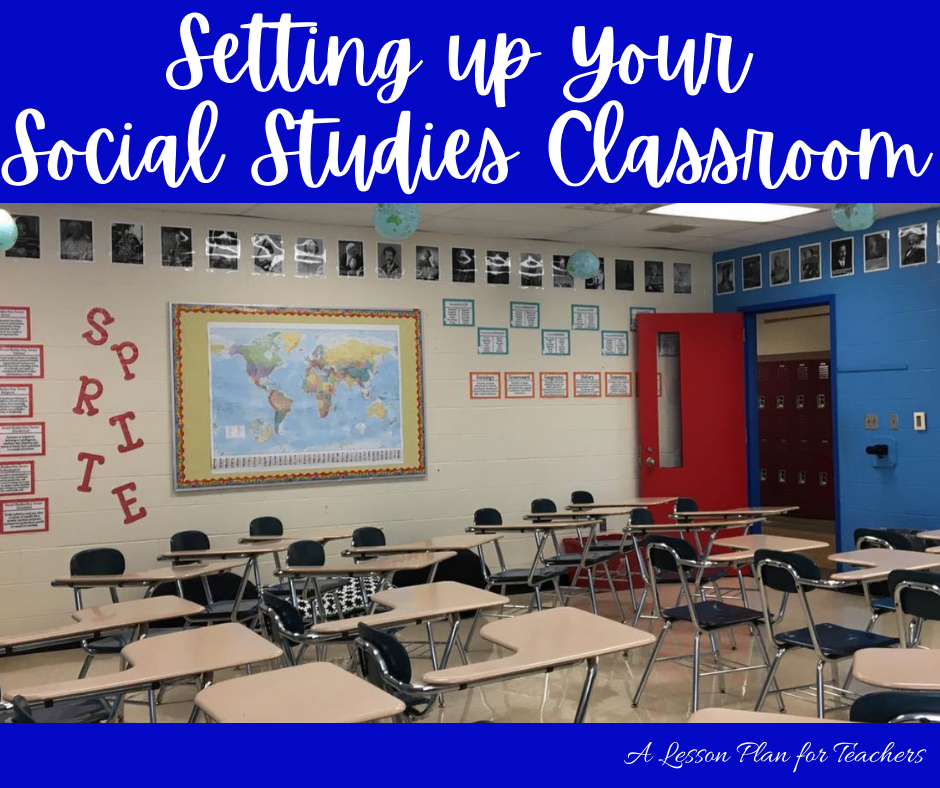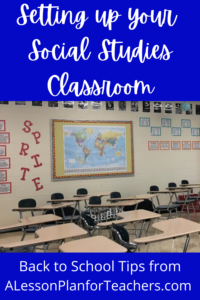When you are handed the keys to your classroom for the coming year, you have an incredible urge to decorate for classroom perfection. In your head, you truly believe that if your classroom design and set-up are perfect, your student will be ideal and your lessons will flow with ease. Well, that’s not reality! But, we can still have classrooms that are great foundations for learning. They can also be designed in ways that help encourage all students to participate and feel included in the lessons. These tips can help you achieve those goals easily!

Basics on Setting Up Your Classroom
First off, stop yourself before you get started on creating the themed classroom worthy of Pinterest fame. It’s harder and more costly than it looks. I tried! And after spending hundreds of dollars at Ikea and beyond, I failed. At the end of a week’s worth of suffering by my entire family to get it all put together, it looked great. But as my students rolled in and lessons began, the reality was not the picture perfect I’d sought.
What you can do to create a great climate for learning:
- Divide your classroom into learning areas. This works for ALL grade levels. It actually worked best in my high school classroom. There it provided the “comfort” craved by students used to sitting in hard desks all day.
- Bring in or build comfortable seating. This does not need to be costly. I scavenged yard sales late on Saturday afternoons and collected decorative pillows, bean bag chairs, and soft benches, pleading for the greatest discount since it was for my classroom! I also bought cheap, but colorful pillow cases and added velcro to enclose old pillows. My students loved these for activities they could do while scrawled out on the floor.
- Use whatever tables/desks you have available, but modify them for most effective learning and teaching strategies. Move desks into facing sets of 4. Place tables along walls to create computer stations. Build or recycle old coffee tables for a reading corner. All of these options are easy, affordable, and loved by students.
- Leave space available. This was my hugest fail in my big classroom remodel. My lessons always need space. Space for students to work. Space for collaboration. Space for display. SPACE! Don’t forget that as you plan out your area.
- Make it colorful (or not), but not cluttered. Use decor that will help with your teaching. Can the posters double as lesson materials? Are they visual appealing, but also informative? Are they inspirational for your (ALL OF YOUR) students? And don’t think that posters have to be printed in color for greatest success. Print everything in black on colored card stock and use frames from Dollar Tree or print in greyscale and put into frames with colored paper backgrounds. Both are very appealing to the eye and for your wallet! And then leave wall space. You will need it for activities (walking tours are my favorite strategy) and to display student work.
Creative Ideas for Setting Up Your Classroom
- Use posters that serve as decor and lesson materials. Poster sets that coordinate with what you teach are perfect to double as bellringer resources or quick exit lessons.
- Collect maps from National Geographic Magazines or old atlases. Display them around your room in frames or create map collages on a bulletin board.
- Laminate magazine or printed maps for desk sets that students can write on with markers! These will prove more valuable than anything you can buy from the text publishers! These resources may work, too!
- Visit your local printer or newspaper for paper end rolls. My local newspaper gives away the end rolls which are great for bulletin board backgrounds or student projects.
- Cover your bulletin boards in fabric. Cheap cotton fabric is much easier to staple up than bulletin paper, and it’s much more colorful. One year I found a world map fabric that was perfect for my Geography classroom.
- Use upcycled aluminum cans and tissue boxes for student station materials. Instead of buying crates, decoupage or collage these freebies to store pencils, markers, highlighters and more at each student station.
Make Your Classroom Yours
This is not really a tip, but it is good advice! Make your space yours! Incorporate what you love! Making your classroom a comfortable place for you will make it more comfortable for your students. I am a Disney fanatic, so Disney quotes lined my walls. They entertained my students and kept me sane in moments of stress.
- Post pictures of places you’ve visited. Or of places you want to visit.
- Create a Bucket List on which you and your students can collaborate. Read these ideas on building community.
- Hang up a line with laundry or craft clips (Dollar Tree) and hang poetry, artwork, or notes from your students.
- Stencil quotes onto the walls of your room to motivate yourself and your classes.
- Use shelf liner to cover student desk tops or work tables so your students have working tables.
And The Top Two Ideas for Secondary Social Studies Classes…
- Project and trace a work map outline onto your classroom wall. It becomes a great tool for quick quizzes, geography lessons, or geography review games.
- Create a classroom timeline. Set up the blank timeline to introduce the project on day 1. Throughout the year, students can add annotates, illustrated topic cards to the timeline. At the end of the year, it is the best tool for reviewing your full year content! Here are ready made timeline templates and topic cards for many Social Studies content areas or even for specific units.

Setting up your classroom for back to school doesn’t have to be a chore! Plan for your classroom to be comfortable, inclusive, and fun! Your students will appreciate your effort and will learn more thanks to the climate you’ve created!
Happy Teaching!
